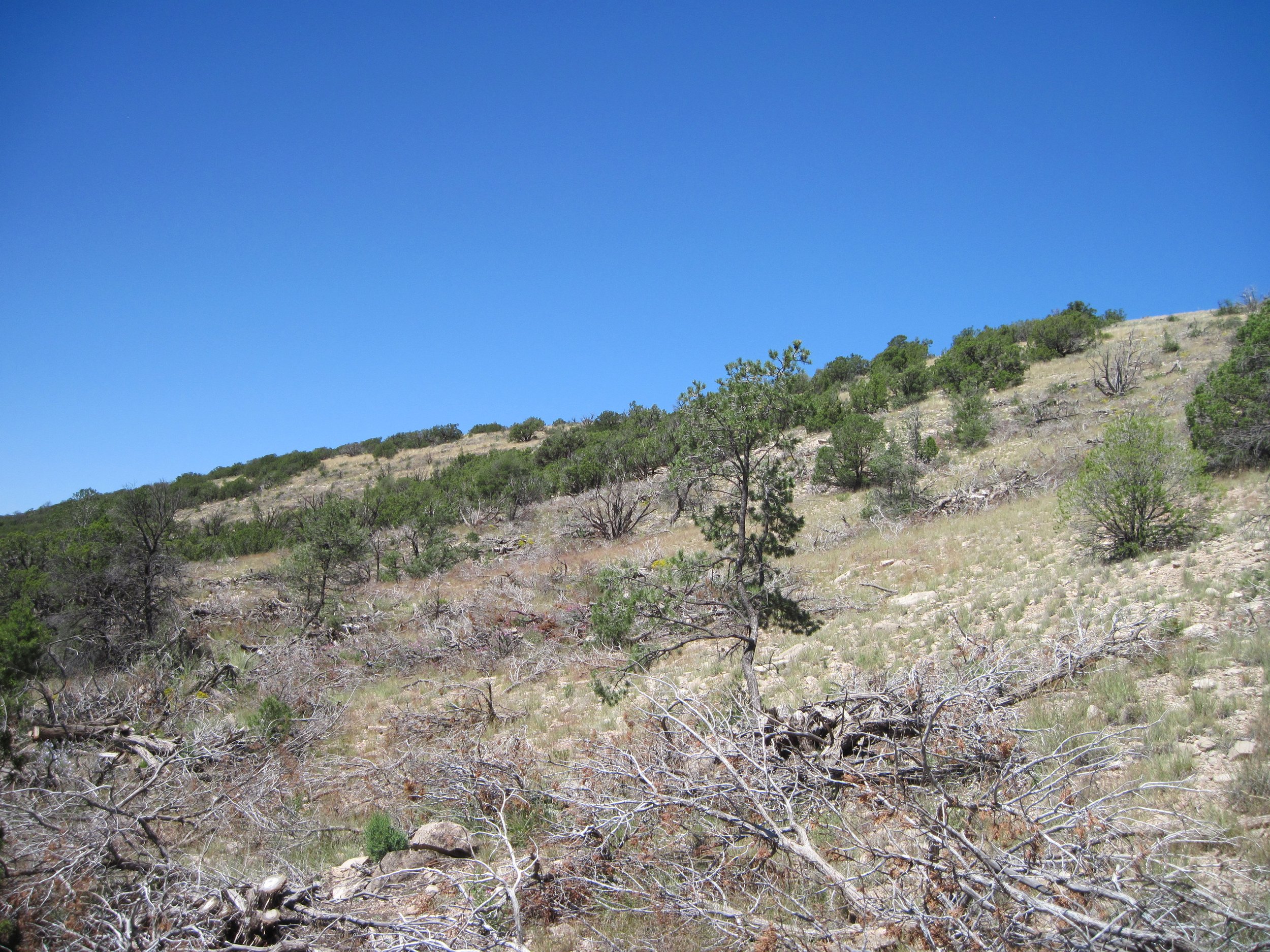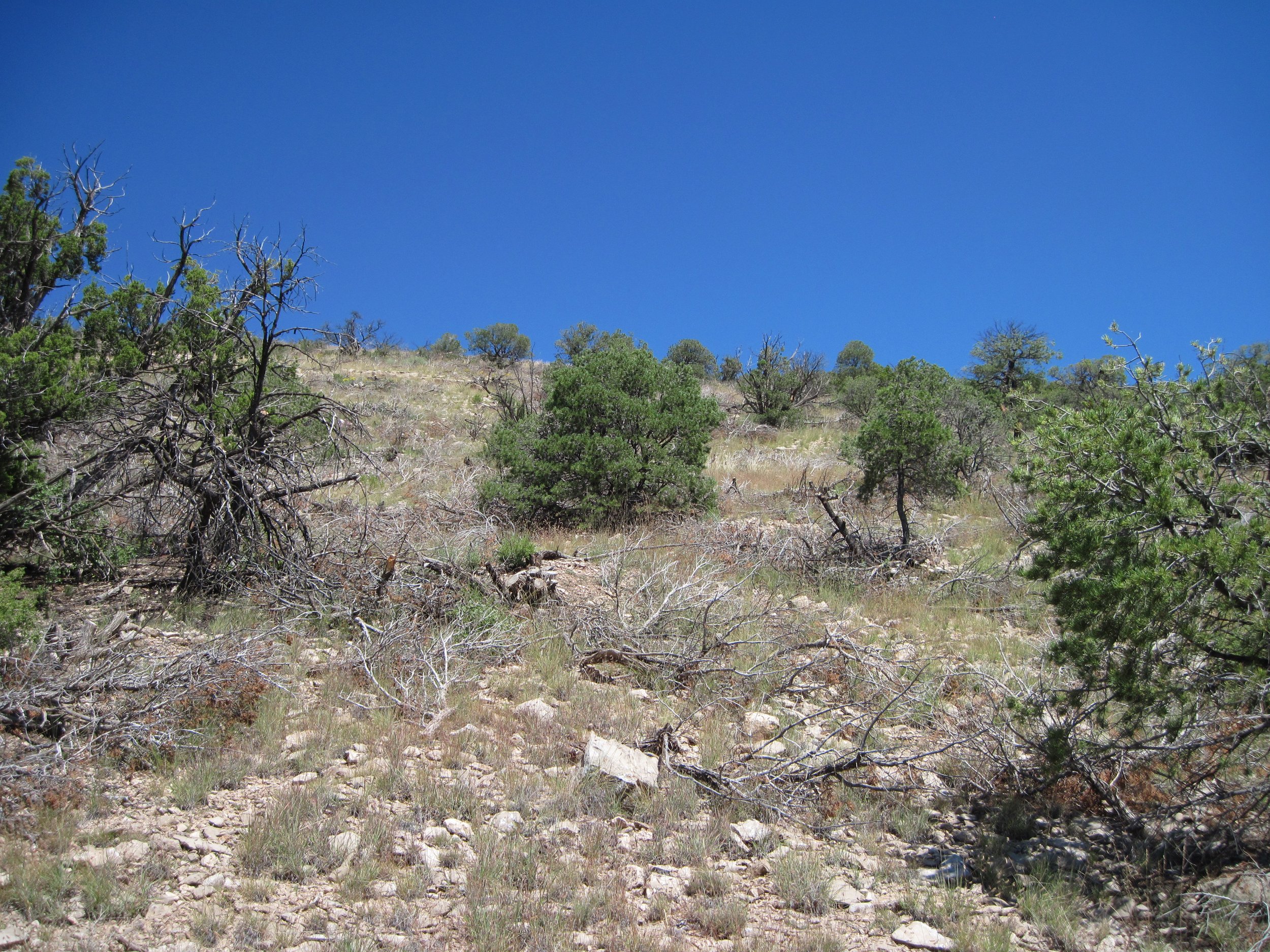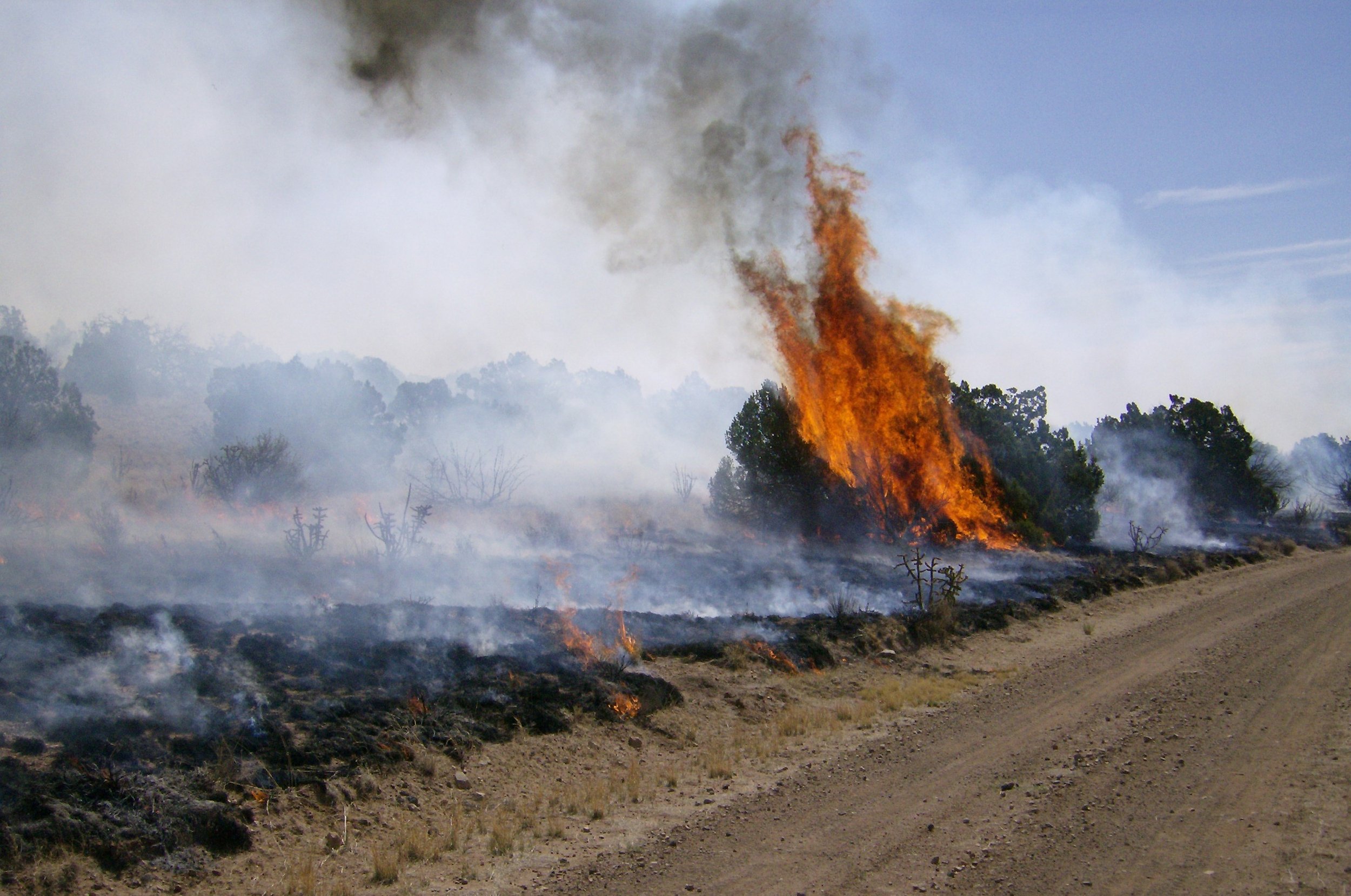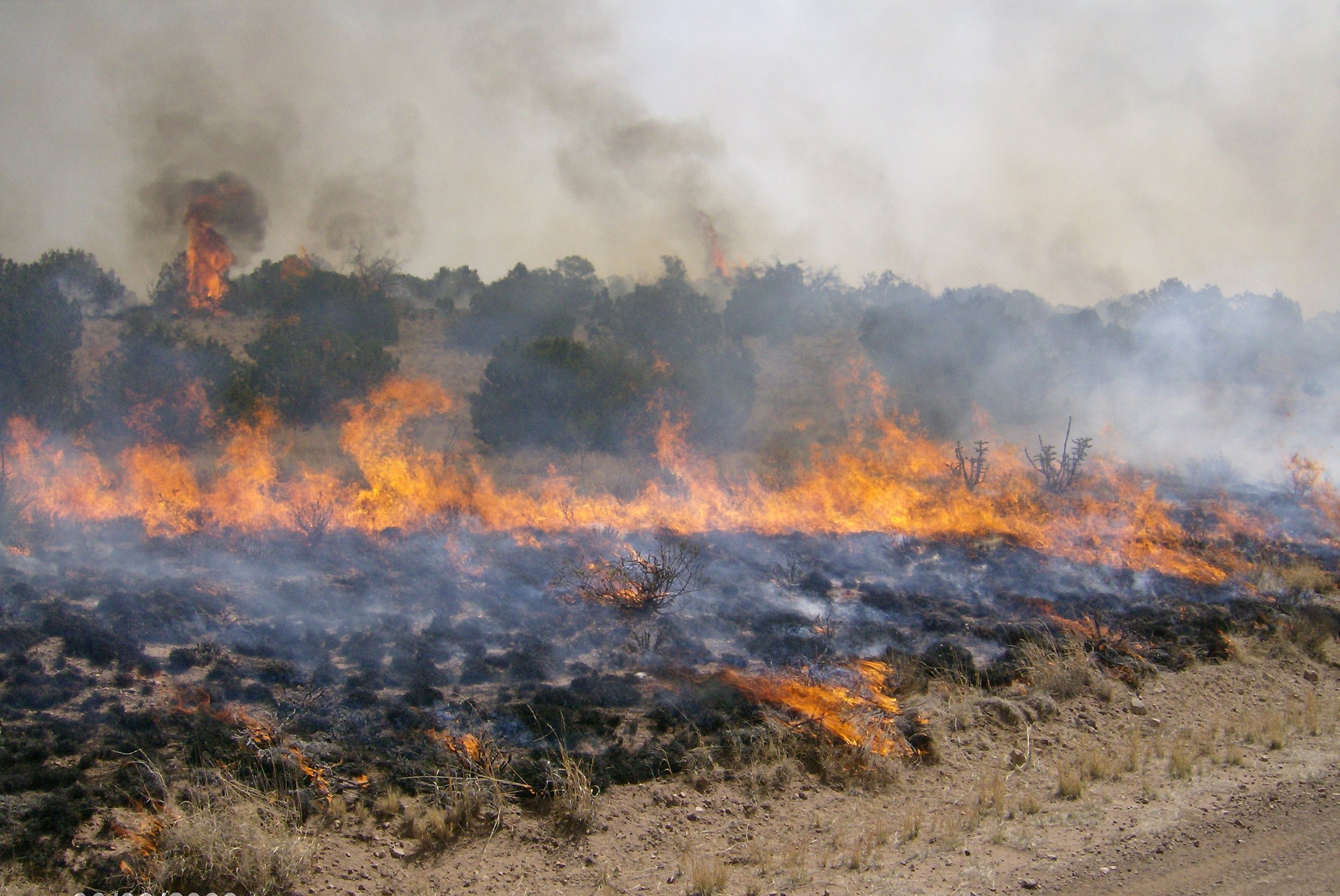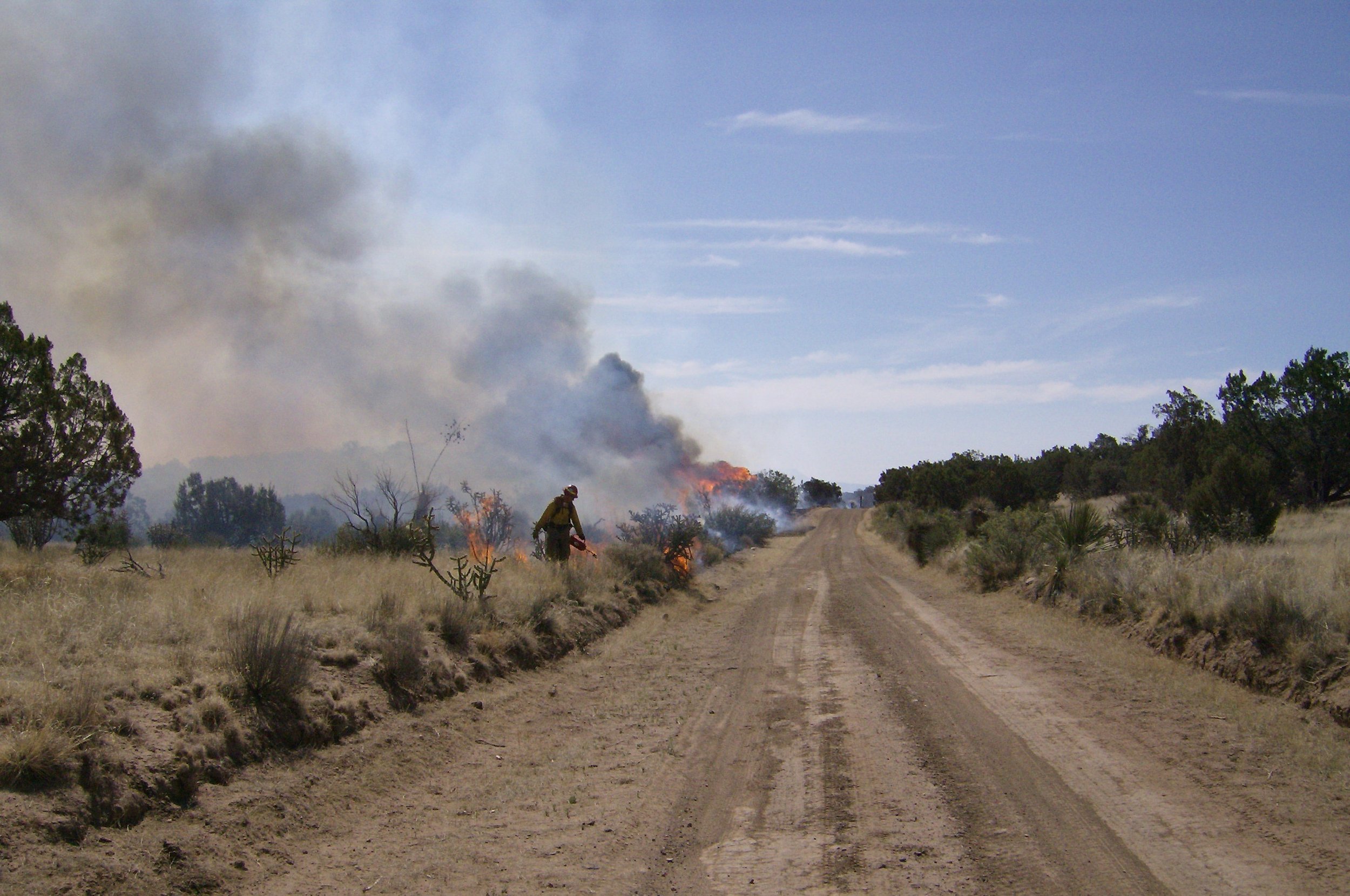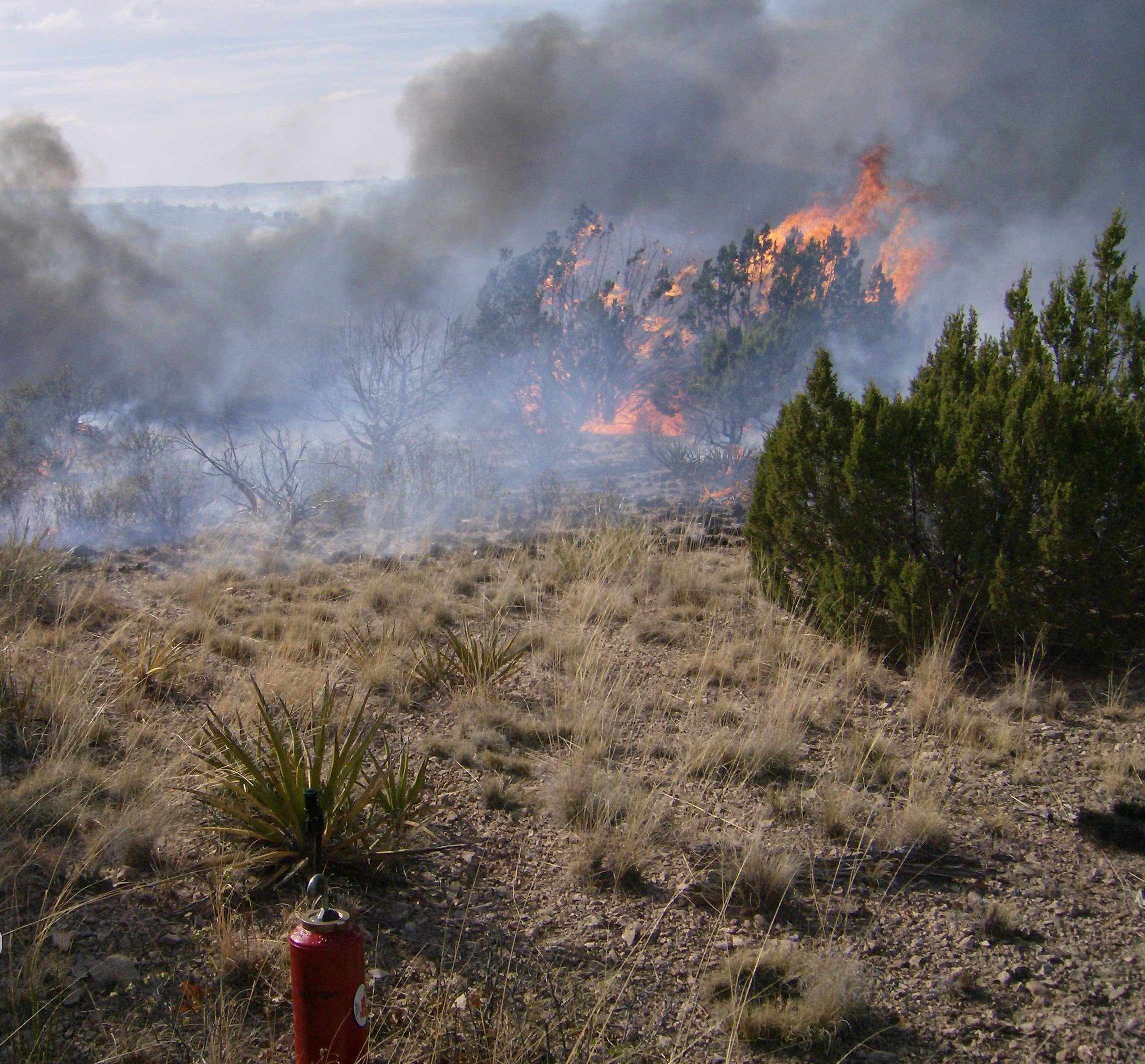Fire on the Chupadera
Fuels treatment successes at a local scale
By Emily Downing, Intermountain West Joint Venture
Lino Baca remembers visiting a fuels treatment site on Chupadera Mesa one year after he and his crews implemented a prescribed burn there. It was just after the monsoon brought much-needed moisture to central New Mexico, and hundreds of wildflowers blanketed the site.
The diversity of native plant species is an important component of healthy wildlife habitat and a benefit of fuels treatments.
“I had never seen this place like that before,” said Baca, who leads the Fuels program out of the Bureau of Land Management (BLM)’s Socorro Field Office. “It was amazing how quickly this area responded to our treatments.”
Chupadera Mesa‘s slopes and canyons are a patchwork of native grassland and piñon-juniper woodland and savanna. This landscape evolved with fire, which helped keep pinyon-juniper savannas and grasslands productive for wildlife and ranching. Fire suppression in the twentieth century, like in many places across the West, put a stop to natural fire cycles that kept savannas open and grasslands diverse and productive. This, combined with climate change, has led to extreme wildfire behavior across western rangelands that makes it increasingly difficult to conserve native sagebrush and grassland ecosystems.
Lann Moore, the BLM State Fuels Manager for New Mexico, said that vegetation decomposition rates are very slow in an arid landscape. When a tree falls or is cut, it often takes fire to kick-start the reabsorption of nutrients back into the soil.
“The only way to start that decomposition process is to get fire on the landscapes,” he said. “These systems have evolved with fire and need fire. You might have some short-term negative effects but in the long run, this is going to make the landscape healthier.”
These pictures show some of the thinning treatments and the adjacent untreated areas on Iron Mine Ridge. This is just west of where the Iron Mine Fire burned.
Baca has been engaged in fuels treatment projects that include (but aren’t limited to) prescribed fire on Chupadera Mesa since the early 2000s. The BLM first implemented chemical spraying to thin fuels, then added hand cutting/mechanical thinning and erosion control before including prescribed fire where appropriate. This mix of techniques not only allows land managers to see what tools are most effective in different places and situations, it creates a mosaic of diverse habitat across the landscape. Applying the techniques in an adaptive process, Baca said, has made a world of difference on Chupadera Mesa.
“We’ve increased the forbs and we have multiple species of grasses out there,” he said. “[The habitat] used to be real bland and it’s come a long way.”
In June of 2022, the fuel treatments were put to the test when the Iron Mine Fire was sparked by lightning and pushed into the Chupadera Mesa fuels treatments by a strong wind. Baca said the treatments helped keep the fire on the surface in most places, as opposed to it moving to the canopy of trees and shrubs, making it much easier to control. If fuels treatments can prevent loss of important wildlife habitat as a result of large-scale high severity fires, that’s a win for wildlife like mule deer, pronghorn antelope, and grassland-obligate bird species.
These pictures are from the Mesa Fire that burned in the same area in 2009 before any fuels treatments had been implemented. Fire fighters are implementing back-burns to moderate the fire’s progress.
The BLM’s Fuels Treatment Effectiveness Monitoring (FTEM) program tracks wildfires that occur in project areas like Chupadera Mesa and documents what happens when those fires intersect with a fuels treatment. Doug Havlina, the BLM lead for the multi-agency FTEM program, said that the program allows federal agencies to identify the types of fuels treatments that have the most tangible benefits, from minimizing fire size and reducing rates of spread, to enhancing the ability to safely engage and manage wildfires. Most of all, he said, FTEM and additional fuels monitoring illustrate how iterative, multi-phase projects like Chupadera Mesa can benefit rangeland health and wildlife resilience in Bureau landscapes.
“We know that the durability and lifespan of treatments varies among ecosystems, and also that rarely is one treatment type adequate to address an ecological issue,” Havlina said. “Fuels management treatments are an investment that requires future maintenance to realize their intended effects.”
Baca and Moore have both seen the importance of long-term maintenance first-hand in the BLM’s treatments on Chupadera Mesa. Their treatments build off of what they learn from previous projects, Moore said—like when they realized thinning forest in v-shaped cuts up the hill helped to direct fire where it needed to go to create a better habitat mosaic on the mesa.
“Constantly going out there and observing the conditions and monitoring what’s going on helps us understand what’s needed on the ground,” Baca said.
And that kind of intimate, on-the-ground knowledge, Havlina said, is the secret sauce when it comes to effective fuels treatments. This adaptive management technique allows project placement to become more strategic, which is important when there are limitations to the pace and scale of implementation, as well as budgetary realities.
“I like to view our fuels management projects as local successes that are superimposed against some really problematic trends in climate, invasives, succession, and disturbance,” Havlina said. “The collection of many successes [like the one at Chupadera Mesa] gives us hope that over time, the curve can start to be bent in some of these troubling trends.”
West side of Chupadera Mesa northeast of Adobe, Socorro County, New Mexico - Photo by Patrick Alexander




